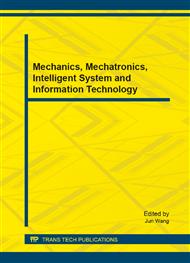p.229
p.233
p.241
p.246
p.253
p.258
p.265
p.270
p.274
A Comparison of Methodologies for Intelligent Computing Used to Integrity Analysis of a Structure Aeronautic
Abstract:
This article presents the application and comparison of two techniques for intelligent computing to perform the analysis of the structural integrity of an aircraft structure. In this context, a ARTMAP-Fuzzy neural network and immunological negative selection algorithm are used in the identification and characterization of structural failure. The main application of these methodologies is to assist in the inspection of aircraft structures aiming at detecting and characterize flaws and decision making. To evaluate the methodology was performed modeling and simulation of signals from a numerical model using an aluminum beam. We performed a comparative analysis of methodologies, proving the efficiency of intelligent methods in the analysis of structural integrity. The results obtained by the method show efficiency, robustness and accuracy. To Evaluate the methodology was Performed modeling and simulation of signals from the numerical model using an aluminum beam. We performed a comparative analysis of methodologies, proving the efficiency of intelligent methods in the analysis of structural integrity. The results Obtained by the methods show efficiency, robustness and accuracy.
Info:
Periodical:
Pages:
253-257
Citation:
Online since:
August 2014
Price:
Сopyright:
© 2014 Trans Tech Publications Ltd. All Rights Reserved
Share:
Citation:


